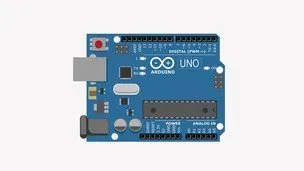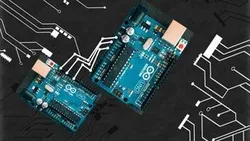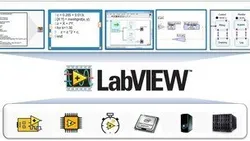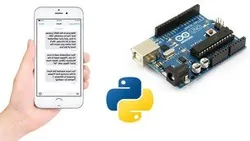
The Arduino and Electronics Bootcamp 
This bootcamp provides an introduction to the fundamentals of electronics, the Arduino platform, and programming with the Arduino C language. Participants will also learn to create a LED Chaser program. ▼
ADVERTISEMENT
Course Feature
![]() Cost:
Cost:
Free
![]() Provider:
Provider:
Udemy
![]() Certificate:
Certificate:
No Information
![]() Language:
Language:
English
![]() Start Date:
Start Date:
Finished
Course Overview
❗The content presented here is sourced directly from Udemy platform. For comprehensive course details, including enrollment information, simply click on the 'Go to class' link on our website.
Updated in [March 06th, 2023]
The Arduino and Electronics Bootcamp is a beginner-level course designed to teach students the basics of Electronics and the Arduino platform. Through this course, students will learn to install Arduino IDE on Windows and Linux (Raspberry Pi), explore the Arduino ecosystem in detail, and program LEDs in different ways with Arduino. Students will also be introduced to all the basic electronic components like breadboards, LEDs, Resistors, jumper wires, and push buttons.
The course consists of over 45 lectures and more than 3.5 hours of videos. It also includes downloadable circuit diagrams and code files. Upon completion of the course, students will be comfortable exploring Arduino platform and programming on their own.
Students will get lifetime access to over 45 lectures plus corresponding PDFs, Arduino Ccode files, and the circuit diagrams for the lectures.
This course is ideal for those who wish to become a Maker and understand and learn how to work with electronics and Arduino. Enroll now and learn Arduino and Electronics in a way that will advance your career and increase your knowledge, all in a fun and practical way!
[Applications]
After completing this course, students will be able to apply their knowledge of Arduino and Electronics to create their own projects. They will be able to use the Arduino IDE to program their projects, and they will be able to use the circuit diagrams and code files provided in the course to create their own projects. Additionally, they will be able to use the knowledge gained in this course to troubleshoot and debug their projects.
[Career Paths]
The career paths recommended to learners of this course are:
1. Arduino Developer: Arduino developers are responsible for designing, developing, and testing Arduino-based projects. They must have a strong understanding of the Arduino platform and its ecosystem, as well as knowledge of the Arduino C programming language. As the demand for Arduino-based projects increases, the demand for Arduino developers is also increasing.
2. Electronics Engineer: Electronics engineers are responsible for designing, developing, and testing electronic components and systems. They must have a strong understanding of electronics and be able to design and develop complex electronic systems. As the demand for electronic components and systems increases, the demand for electronics engineers is also increasing.
3. Robotics Engineer: Robotics engineers are responsible for designing, developing, and testing robotic systems. They must have a strong understanding of robotics and be able to design and develop complex robotic systems. As the demand for robotic systems increases, the demand for robotics engineers is also increasing.
4. IoT Developer: IoT developers are responsible for designing, developing, and testing IoT-based projects. They must have a strong understanding of the IoT platform and its ecosystem, as well as knowledge of the Arduino C programming language. As the demand for IoT-based projects increases, the demand for IoT developers is also increasing.
[Education Paths]
The recommended degree paths for learners of this course are:
1. Bachelor of Science in Electrical Engineering: This degree program provides students with a comprehensive understanding of electrical engineering principles and their applications. Students learn about circuit design, digital signal processing, power systems, and control systems. They also gain experience in programming and software development. This degree is ideal for those interested in developing and designing electronic systems and components.
2. Master of Science in Robotics: This degree program focuses on the design, development, and implementation of robotic systems. Students learn about robotics engineering, artificial intelligence, and computer vision. They also gain experience in programming and software development. This degree is ideal for those interested in developing and designing robotic systems and components.
3. Bachelor of Science in Computer Science: This degree program provides students with a comprehensive understanding of computer science principles and their applications. Students learn about algorithms, data structures, software engineering, and computer networks. They also gain experience in programming and software development. This degree is ideal for those interested in developing and designing computer systems and components.
4. Master of Science in Artificial Intelligence: This degree program focuses on the design, development, and implementation of artificial intelligence systems. Students learn about machine learning, natural language processing, and computer vision. They also gain experience in programming and software development. This degree is ideal for those interested in developing and designing AI systems and components.
The development trends for these degree paths are focused on the use of emerging technologies such as artificial intelligence, machine learning, and robotics. These technologies are being used to create more efficient and effective systems and components. Additionally, the use of data science and analytics is becoming increasingly important in the development of these systems.
Pros & Cons

Excellent

Satisfying

Helpful for beginners

Explains everything necessary

Fast learning

Good explanation

Learnt new things

Lack of programming details

Need more topics on ultrasonic sensor and LCD display

Goes a little slow

Repetition of concepts.
Course Provider

Provider Udemy's Stats at AZClass
In The Arduino and Electronics Bootcamp, learners can learn the fundamentals of electronics, the Arduino platform and ecosystem, ArduinoC programming, and LED chaser programming. Students will be able to build projects using the Arduino Uno, explore digital outputs and learn about the Arduino IDE and setup. They will also learn simple and RGB LED, LED Bar Display, 7 Segment LED Display and LED Chaser circuits. Through this course, learners will gain the skills and experience to independently explore the Arduino platform and program. They will also have lifetime access to course content including lectures, PDFs, Arduino C code files and circuit diagrams.
Discussion and Reviews
0.0 (Based on 0 reviews)
Explore Similar Online Courses

JavaScript Essentials 2020 Mini Course

Developing Cloud-Native Apps w& Microservices Architectures

Python for Informatics: Exploring Information

Social Network Analysis

Introduction to Systematic Review and Meta-Analysis

The Analytics Edge

DCO042 - Python For Informatics

Causal Diagrams: Draw Your Assumptions Before Your Conclusions

Whole genome sequencing of bacterial genomes - tools and applications

Arduino Communication with SPI Protocol

Interfacing LabVIEW With Arduino via LINX


Start your review of The Arduino and Electronics Bootcamp